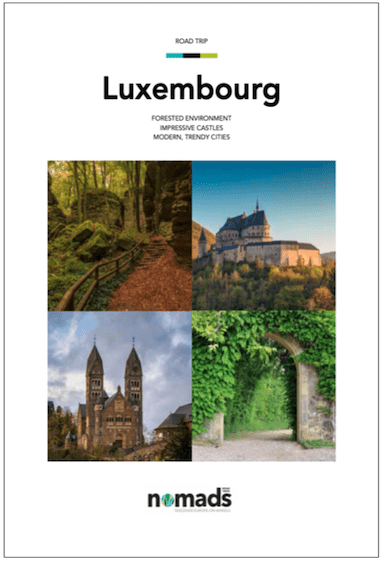
Luxembourg
This 263 km road trip through Luxembourg starts in Weiswampach in the north and follows the Luxembourg Ardennes past the medieval town of Clervaux to the Moselle region on the border with Germany to end in the Mullerthal, also known as Little Switzerland. The combination of nature, castles and quaint towns makes this road trip so special.
Highlights along the way include the panoramic plateaus and winding valleys of the Luxembourg Ardennes, the medieval town of Clervaux, the imposing Vianden castle, the Bemerschen nature reserve, the wines of the Moselle Valley and the impressive Mullerthal.
- Perfect travel companion if you want to discover Luxembourg by motorhome, car or motorbike
- Clearly organised into 9 stages with 36 sights, travel tips, 26 hiking routes, 19 cycling routes, local tourism services and places to stay (31 campsites and 11 camper van sites)
- Available as PDF (travel guide 70 pages) in beautiful design, illustrated with inspiring texts and high-quality photography
- Includes interactive map for PC, tablet or smartphone so you have all information at hand on the road
- Includes GPX files so you can download the full route and all cycling and walking routes onto your GPS
Read the first chapter
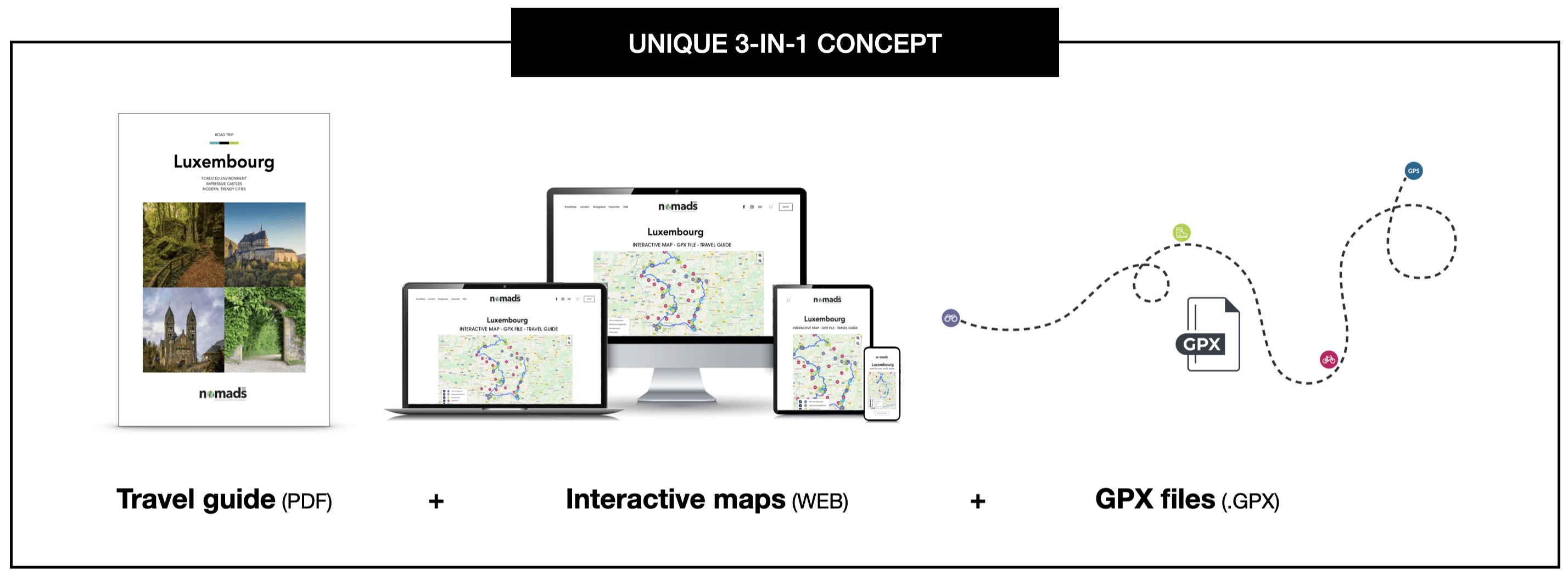
Some highlights on this road trip

Weiswampach - Clervaux
We start our road trip in the Eisleck region, also called the Luxembourg Ardennes. We might mention it, but during this route we will see a lot of nature, that, and castles. The Luxembourg Ardennes are characterised by panoramic plateaus and winding valleys. Despite the fact that Luxembourg is far away from the sea, you will not lack water fun. The two artificial ponds of Weiswampach invite you to jump in. Besides swimming, you can do various water sports and there are places where you can fish.
Our next stop is a town located in a deep, narrow valley on the banks of the Clerve: Clervaux. The medieval past of the region is clearly visible in Clervaux. Among others, you will find the abbey of the Benedictines of St. Maurice. Although built in 1910, the Romanesque-Burgundian style is clearly recognisable. High above Clervaux, the Benedictine monastery towers over the town. The castle dates from the 15th century and was built high on the rock for strategic reasons. From the rock you have a beautiful view over the valley and Clervaux. The castle was destroyed during the Second World War, but is now fully restored. Regularly interesting exhibitions are held in the castle. Not far from Clervaux (nothing is really far in Luxembourg) lies the Nature Park of the Our.
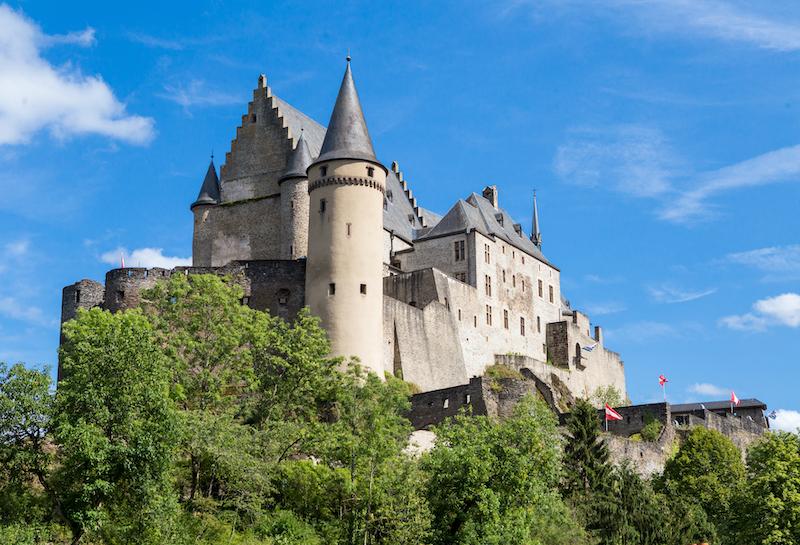
Clervaux - Vianden
There are many well-preserved or restored castles and fortresses in the area, each one more interesting to visit than the next. An absolute must see is the impressive castle of Vianden. The town itself may not be so special, but the castle is definitely worth a visit. With its beautiful location on the banks of Die Our, a tributary of the Sûre, the castle is a real attraction. The fortress was built from the 11th to the 14th century on the foundations of a Roman castle and a Carolingian refuge. Until 1977, the castle belonged to the grand ducal family, now it belongs to the state.
Bourscheid Castle also evokes the fascinating times of the Middle Ages. Traditional markets and medieval feasts let you relive the era of lords and knights. Bourscheid is a real fairy-tale castle and probably dates from the 10th century. In the 14th and 15th centuries, the fortress was considerably extended with a wall and six gothic towers. In the 'Maison de Stolzembourg' (1348) - a gothic mansion near the castle - you can visit a museum.
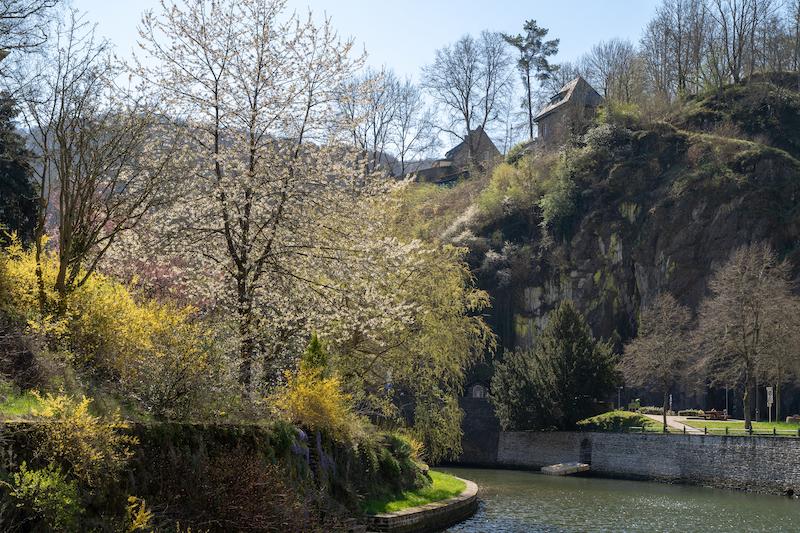
Vianden - Esch-sur-Sûre
It is said that Esch-sur-Sûre is the most beautiful village in Luxembourg. Esch-sur-Sûre is situated at an altitude of around three hundred metres and is surrounded by the river Sûre. The old houses in the centre give the village a charming and authentic character. You will also find the remains of the castle of Esch-sur-Sûre here. Old documents already refer to the castle, the oldest dating from Charlemagne's 3rd year of rule, around the year 773 - 774. Further extensions took place mainly in the 15th century, after which it fell into disrepair over the centuries. In the 19th century, it was inhabited by civilians, after which it was restored. When we were there, the castle was still accessible free of charge.
Nature lovers should not miss the lake of La Haute Sûre. The lake is located not far from the Belgian border in the extensive nature park and eponymous La Haute Sûre, about one kilometre west of Esch-sur-Sûre. The lake is 380 hectares in size and provides not only drinking water and energy, but is also a very popular recreational area. Anyone who enjoys swimming, canoeing, diving, surfing or sailing will certainly find something to enjoy here. Only the zone of about 5 km around the main dam is off-limits for safety reasons.
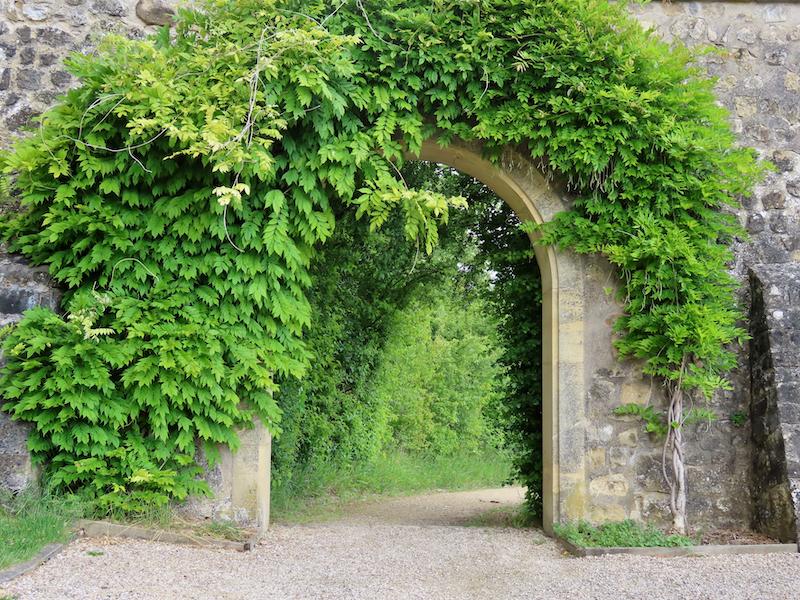
Esch-sur-Sûre - Ansembourg
We are reaching the centre of the country, the region of Guttland. Although we are in the centre, this is a very quiet and peaceful region with charming villages, restored farms, imposing castles and mysterious fortresses. The ideal region for a nice bike ride.
In the Valley of the Seven Castles - the castles are located on the road from Mersch to Koerich - you will find, among others, the castle of Ansembourg with its French gardens. The castle was built in the first half of the 17th century by Thomas Bidart, pioneer of the iron industry. Also impressive are the French baroque gardens of the castle. The gardens are laid out on several terraces and originally featured statues, impressive fountains, botanical collections, exotic plants and numerous species of fruit trees. The gardens are well known beyond the borders of Luxembourg.
In Ansembourg itself, we enjoyed good food and drink before visiting the other castles in the Valley of the Seven Castles. Some are privately owned and can only be visited from the outside. The castles tour can also be completed on foot in a multi-day hike.
